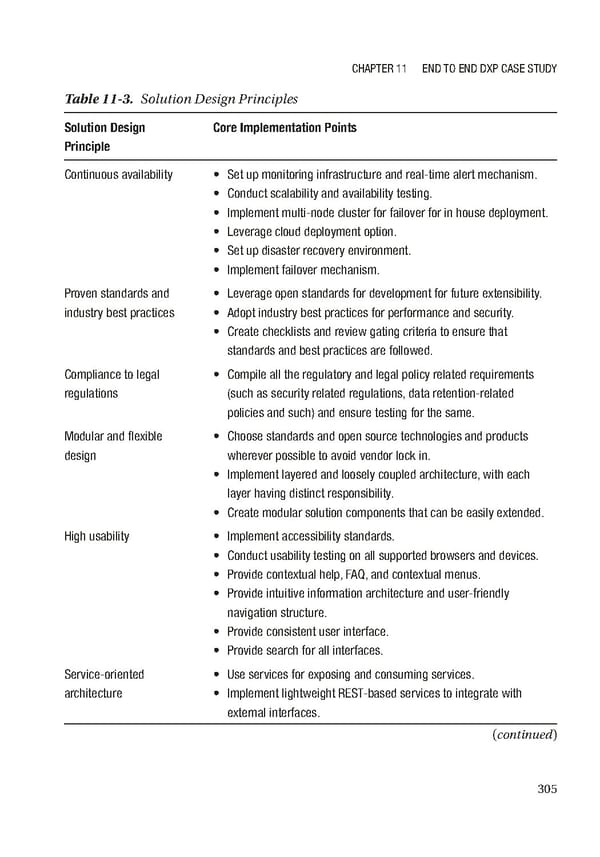Chapter 11 end to end dXp Case study Table 11-3. Solution Design Principles Solution Design Core Implementation Points Principle Continuous availability • set up monitoring infrastructure and real-time alert mechanism. • Conduct scalability and availability testing. • Implement multi-node cluster for failover for in house deployment. • Leverage cloud deployment option. • set up disaster recovery environment. • Implement failover mechanism. proven standards and • Leverage open standards for development for future extensibility. industry best practices • adopt industry best practices for performance and security. • Create checklists and review gating criteria to ensure that standards and best practices are followed. Compliance to legal • Compile all the regulatory and legal policy related requirements regulations (such as security related regulations, data retention-related policies and such) and ensure testing for the same. Modular and flexible • Choose standards and open source technologies and products design wherever possible to avoid vendor lock in. • Implement layered and loosely coupled architecture, with each layer having distinct responsibility. • Create modular solution components that can be easily extended. high usability • Implement accessibility standards. • Conduct usability testing on all supported browsers and devices. • provide contextual help, FaQ, and contextual menus. • provide intuitive information architecture and user-friendly navigation structure. • provide consistent user interface. • provide search for all interfaces. service-oriented • use services for exposing and consuming services. architecture • Implement lightweight rest-based services to integrate with external interfaces. (continued) 305
 Building Digital Experience Platforms Page 315 Page 317
Building Digital Experience Platforms Page 315 Page 317